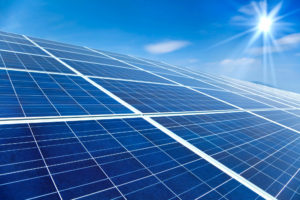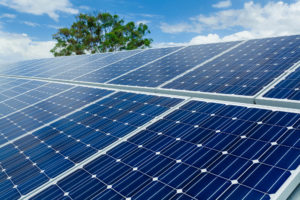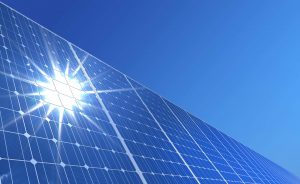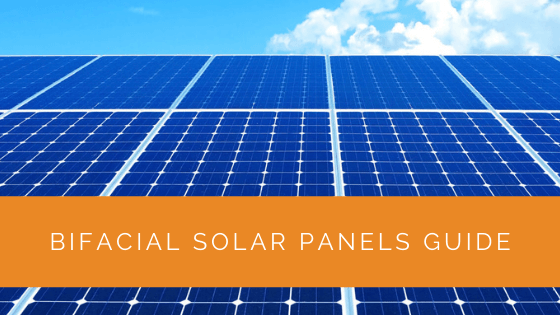The increasing awareness of information on ecological sustainability has created a platform for the fame of solar power. Solar energy has proven to be environmentally friendly and also affordable.
Most property owners, both residential and commercial, have settled for this option to keep their homes and businesses running.
Currently, there are numerous types of gadgets on the market to aid in this course. One of them is bifacial solar panels. Read on to learn more about these valuable devices.
Contents
- 1 Key Takeaways
- 2 What Are Bifacial Solar Panels?
- 3 How Does a Bifacial Solar Panel Work?
- 4 Who Should Use Bifacial Solar Panels?
- 5 How Are Bifacial Modules Installed?
- 6 Bifacial Solar Panel Installation Methods
- 7 What Are the Advantages of Bifacial Solar Panels?
- 8 Case Study: Maximizing Energy Production with Bifacial Solar Panels
- 9 Expert Insights From Our Solar Panel Installers About Bifacial Solar Panels
- 10 Experience Solar Excellence with Us!
- 11 Conclusion
Key Takeaways
- Bifacial solar panels capture sunlight from both sides, making them more efficient than traditional solar panels. They work best near reflective surfaces like swimming pools or glass, offering an aesthetic improvement for larger installations.
- Bifacial solar panels convert light energy into electrical energy by utilizing various pathways for sunlight absorption, including direct absorption by solar cells and reflection off glass surfaces. They are designed to withstand various weather conditions.
- Both residential and commercial property owners can benefit from bifacial solar panels, but their efficiency depends on the installation location. Consider factors like the color of the surface, reflectance, and avoiding obstacles during installation for optimal performance. Two common installation methods are vertical and horizontal positioning. These panels are known for their durability, resistance to environmental factors, and higher power production from both sides.
What Are Bifacial Solar Panels?
As the name suggests, bifacial solar panels are similar to regular solar panels but capture sunlight from either side. Nevertheless, this option is far much superior to the typical or mono facial solar powers.
They can charge a large amount of solar energy due to its higher functioning level. They feature a transparent glass hence a higher efficiency during functioning.
When working with solar panels, a rule of thumb is to ascertain it can bring as much energy as possible. Bifacial solar panels work suitably to achieve this mission, but it is imperative to mount them near reflective surfaces.
The best recommendations include swimming pools or glass. In such areas, the solar panels manage to harness the energy from either side of the ground. You can place them on walkways, pergolas, sandy and snowy regions.
Bifacial solar panels can also help improve the aesthetic of your home by creating a shady overhand. It is, however, possible for the big-sized solar panels.
How Does a Bifacial Solar Panel Work?
Bifacial solar panels have changed the perception of solar energy. Their ability to capture a tremendous amount of power makes them one of the best devices in this category. Bifacial solar panels work uniquely to ensure that all the gadgets within your home keep running.
Understanding their structure is the only gateway to understanding how they function. Like other solar devices, these models work by converting light energy into electrical energy. The manufacturing of these models is different, thus capturing solar energy through various ways.
When installed in the open air, bifacial solar panels work in numerous ways to capture solar energy. Once sunlights lands on the solar panel, the light splits to different parts of the device. A little bit of the light gets absorbed by the solar cells within the panels then converted into electrical energy.
Another portion of the light lands on the glass materials on the device reflected all through the panel’s interior. During the process, it strikes a solar cell hence absorption and conversion to electrical energy. Some of the light passes through the glass and goes directly to the ground. If the installation site is strategic, the light bounces back to the panels and finally becomes electrical energy.
The manufacturing of almost all types of bifacial solar panels is different. Most don’t have metal gridlines hence relying on the glass structure to keep everything in place. The ideal choice of glass is the tempered model, consequently durable despite the choice of location. Frames come with long-term erosion, therefore, lowering the efficiency of the panels.
Bifacial solar panels can withstand varying weather conditions without impacting their integrity or performance.

Who Should Use Bifacial Solar Panels?
The demand for bifacial solar panels is increasing at a first-rate. Both residential and commercial property owners are eligible candidates for these devices. However, it is imperative to run a little inspection on your house to ensure the machines suitably work for you. The efficiency of bifacial solar relies on the area chosen for installation.
The common sites have been commercial areas with a massive need for energy. A residential application is still possible but depends on your environment, space, budget, and energy goals.
Establish if you need them mounted on the ground. Provide a snow cover for the winter checks. Continuous exposure of the devices to such weather may reduce their shelflife.
If you need it on the roof, the color is a matter of consideration. It should be white or silver for maximum absorption of light. These structures do not take as much space as mono-facial solar panels.
The most critical item is having a light or colored surface hence optimal performance by the boards. Residential homeowners can now enjoy electricity within their homes through strategic planning before installation.
As earlier discussed, the vital factor is to ensure you provide a suitable location; otherwise, it will not bring home as much energy to keep your devices functioning for an extended period.

How Are Bifacial Modules Installed?
If you want to get the best of bifacial solar panels, your number one point of consideration must be the installation location. You can have them against a roof like what happens with a mono facial model. However, this option comes with a limitation regarding reflectance.
A little bit of creativity is vital to ensure it performs optimally for your benefit. It is essential to install the panels on a rack for efficient reflection of light. Without this provision, there would be hardly any importance to the bifacial gain.
If you are considering the roof, it must be white or silver. These two colors still promote the reflective function hence maximum absorption.
Surfaces like sand and white tiles are also ideal. Stay away from black surfaces.
During installation, there shouldn’t be any obstacles near the bifacial solar panels. Remove any items in front or behind the devices. The provision allows for maximum rebounding of the light on either side of the panels.
Bifacial Solar Panel Installation Methods
Vertical Installation
The method involves placing bifacial solar panels vertically. The positioning is strategic as the devices face both sides. The angling is ideal for better reflection hence getting captured by the solar cells in the machine. The side facing on the east allows for optimal energy production when the sun rises in the morning and the west in the afternoon.
Horizontal Installation
Horizontal installation is when the bifacial solar panels get placed in a straight position on the ground. The surface must be flat; otherwise, the panels will slide off and break.
The primary material for constructing is glass, and this can suffer damages after falling from a location like a roof. This method is ideal for structures that require a little bit of shade from the sun. The panels absorb the reflected light from either side.

What Are the Advantages of Bifacial Solar Panels?
Durability
The usage of tempered glass during the manufacturing of the bifacial solar panels makes the devices durable. The structure is far much more robust compared to that of conventional solar panels.
The machines are safe from environmental factors like snow or rainwater. Also, they can withstand strong winds. The best in the category can serve up to around thirty years without presenting problems.
PID
The structure of these solar panels ensures there’s no chance of degradation. The long-term impact on the items is a higher efficiency during the performance.
Higher Power Production
The solar cells within the bifacial solar panels comprise monocrystalline silicon. The provision improves the level of power production from both sides of the device.
Higher Output
It would be best to consider the bifacial solar panels over the traditional models for your home’s increased power output level. However, there are varying solar panels, all with different capabilities. Through proper installation methods, you can successfully capture a vast amount of light.
Case Study: Maximizing Energy Production with Bifacial Solar Panels
Background
At Solar Panels Network USA, we continuously explore innovative solar technologies to provide our clients with the most efficient and sustainable energy solutions. Recently, we implemented a project using bifacial solar panels for a commercial property aiming to maximize its energy production and improve overall efficiency.
Project Overview
The commercial property required a solar solution that could generate substantial energy while maintaining aesthetic appeal. Given the large surface area and the potential for reflective surfaces, bifacial solar panels were identified as the ideal solution to meet these needs.
Implementation
We began by assessing the property to determine the optimal placement for the bifacial solar panels. The site had several areas with high reflectivity, including a swimming pool and glass walkways, which were perfect for installing bifacial panels.
- System Design and Component Selection: We designed a system incorporating bifacial solar panels with monocrystalline silicon cells for higher power production. The panels were selected for their ability to capture sunlight from both sides, enhancing overall energy efficiency.
- Installation: The installation involved placing the bifacial panels on racks near the reflective surfaces. We used a combination of vertical and horizontal installation methods to ensure maximum light absorption. The vertical installation along the glass walkways allowed the panels to capture morning and afternoon sunlight effectively, while the horizontal installation around the swimming pool maximized the reflection from the water surface.
- System Testing and Optimization: After installation, we conducted thorough testing to ensure the panels were performing optimally. Adjustments were made to the angles and positions of the panels to maximize light capture and energy production.
Results
The bifacial solar panel system delivered exceptional performance, significantly increasing the property’s energy production. Key outcomes included:
- Increased Energy Production: The bifacial panels produced up to 25% more energy compared to traditional panels, thanks to their ability to capture sunlight from both sides. This led to a substantial reduction in the property’s energy costs.
- Enhanced Durability and Reliability: The tempered glass construction of the panels ensured they withstood various weather conditions, providing reliable performance throughout the year.
- Aesthetic Appeal: The sleek design of the bifacial panels added to the aesthetic appeal of the property, creating a modern and eco-friendly look.
- Sustainability Impact: The increased energy production and efficiency contributed to a significant reduction in the property’s carbon footprint, aligning with its sustainability goals.
Summary
Our experience with bifacial solar panels highlights their potential to revolutionize energy production for both commercial and residential properties. By strategically positioning the panels and leveraging reflective surfaces, we maximized their efficiency and output. At Solar Panels Network USA, we are committed to providing innovative solar solutions that deliver superior performance and sustainability.
Expert Insights From Our Solar Panel Installers About Bifacial Solar Panels
Bifacial solar panels are a game-changer in the solar industry. Their ability to capture sunlight from both sides significantly boosts their efficiency, making them a great option for maximizing energy production, especially in areas with reflective surfaces.
Lead Solar Installer
The durability of bifacial solar panels is impressive. With tempered glass on both sides, they can withstand harsh weather conditions and environmental factors, ensuring long-term reliability and performance.
Senior Solar Technician
Proper installation is key to harnessing the full potential of bifacial solar panels. By positioning them near reflective surfaces like white roofs or sandy areas, you can maximize their energy capture and improve overall efficiency.
Solar Energy Consultant
Experience Solar Excellence with Us!
Trust in Solar Panels Network USA, where our seasoned experts deliver top-quality solar solutions for homes and businesses nationwide. With a legacy of countless successful installations and a commitment to sustainable energy, we’re your reliable partner in the solar journey. Ready for a brighter, eco-friendly future? Call us now at (855) 427-0058 and harness the power of the sun!
Conclusion
Solar energy is a cheap and efficient way of producing electricity. Adopting bifacial solar panels is an opportunity to reap the numerous benefits associated with the devices. Ensure you employ the ideal installation method for better performance.
About the Author
Solar Panels Network USA stands at the forefront of solar energy solutions, driven by a team of seasoned solar engineers and energy consultants. With over decades of experience in delivering high-quality solar installations and maintenance, we are committed to promoting sustainable energy through customer-centric, tailored solutions. Our articles reflect this commitment, crafted collaboratively by experts to provide accurate, up-to-date insights into solar technology, ensuring our readers are well-informed and empowered in their solar energy decisions.

